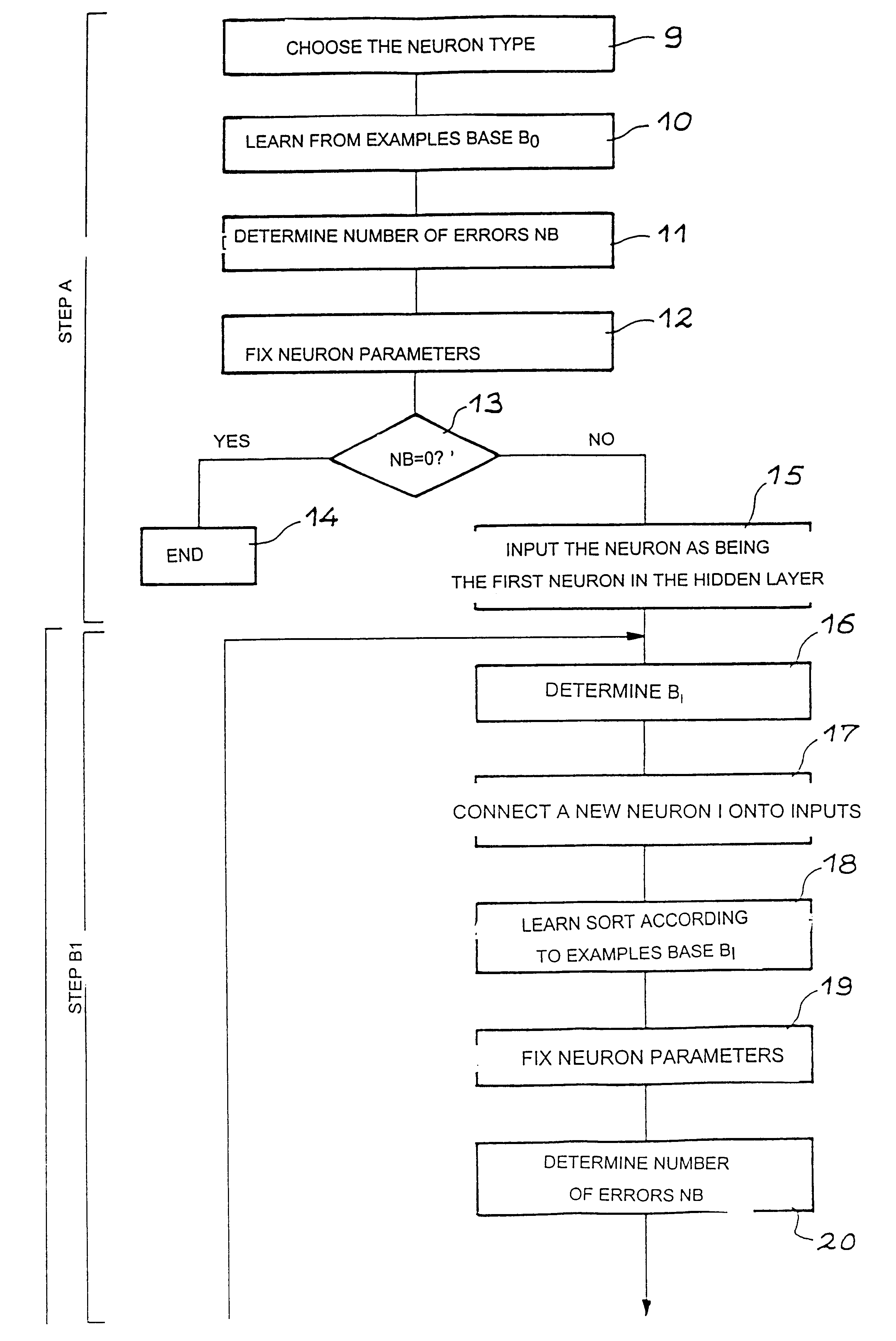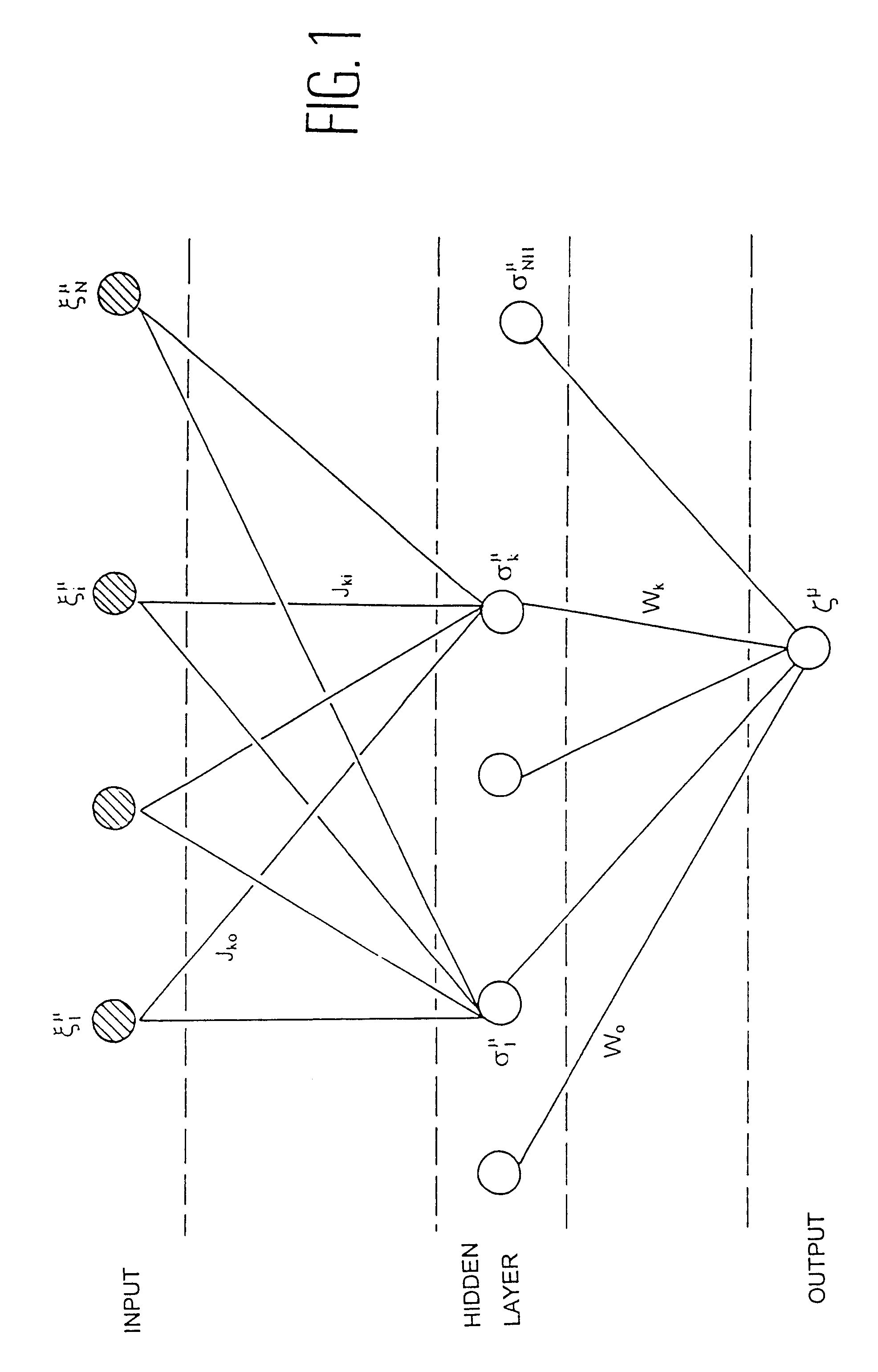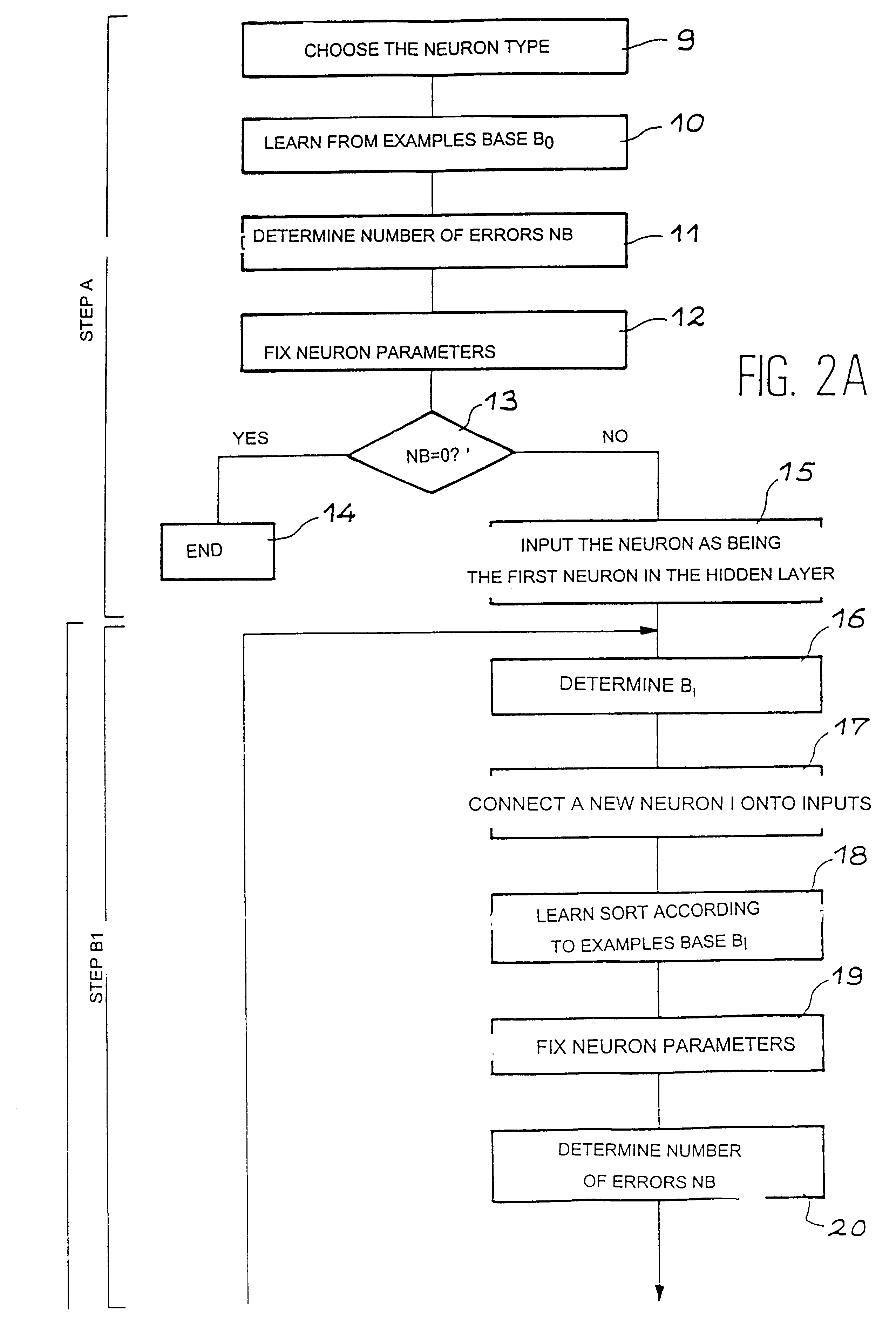Learning method generating small size neurons for data classification
- Summary
- Abstract
- Description
- Claims
- Application Information
AI Technical Summary
Problems solved by technology
Method used
Image
Examples
first embodiment
According to the invention, internal representations of inputs in the examples base form an internal representations base B.sub.RI (i) and step B2) consists of:
B2a) introducing a linear type output neuron, connecting this output neuron to the hidden neurons, teaching this output neuron the sort of the internal representations base B.sub.RI (i) and determining the number of learning errors in the output neuron:
B2b) if this number is zero, considering that the network is built up and includes a layer of i hidden neurons;
B2c) if this number is not zero, considering that the output neuron learning errors are errors from the previous neuron in step B1a), eliminating this output neuron and restarting the processing from step B1a) until the number of errors in the output neuron is zero.
According to a second embodiment in which the network inputs are binary, the process comprises an intermediate step B3) carried out between steps B1) and B2) and consisting of:
B3a) determining the number of ...
third embodiment
According to the invention in which network inputs are binary, the internal representations of inputs in the examples base form an internal representations base B.sub.RI (i) and step B2), when it is carried out after step B3c), consists of:
B2d) introducing an output neuron called a pseudo-neuron, connecting this pseudo-neuron to all hidden neurons for which the parameters are fixed, calculating the output from this pseudo-neuron as being approximately the product of the states of the hidden neurons;
B2e) determining if the pseudo-neuron correctly sorts all examples in the internal representations base B.sub.RI (i);
B2f) if it does, learning is considered to be finished and the created network comprises a layer of i hidden neurons;
B2g) if not, considering that the output pseudo-neuron sorting errors are errors from the previous neuron in step B1a), eliminating this output pseudo-neuron and restarting the processing at step B1a) until the number of output pseudo-neuron errors is zero.
Ac...
second embodiment
The second embodiment comprises an operation 30 that consists of defining a pseudo-neuron and an operation 31 that consists of connecting this pseudo-neuron to all neurons in the hidden layer, for which the parameters are fixed. This pseudo-neuron then has an output that corresponds approximately to the product of the states of the hidden neurons.
The process continues with an operation 32 that consists of verifying if the sort of the internal representations base B.sub.RI by this pseudo-neuron is correct. This is done by verifying if the number Nb is zero (block 33). If it is, learning is finished (block 34). However if it is not, the pseudo-neuron is eliminated (block 35) and the process restarts from the beginning of operation 16 by adding a new hidden neuron, considering the errors in the pseudo-neuron that has just been eliminated as being learning errors in the previous neuron i-1.
Learning of each perceptron within the neural network, in other words all learning operations, fro...
PUM
 Login to View More
Login to View More Abstract
Description
Claims
Application Information
 Login to View More
Login to View More - R&D
- Intellectual Property
- Life Sciences
- Materials
- Tech Scout
- Unparalleled Data Quality
- Higher Quality Content
- 60% Fewer Hallucinations
Browse by: Latest US Patents, China's latest patents, Technical Efficacy Thesaurus, Application Domain, Technology Topic, Popular Technical Reports.
© 2025 PatSnap. All rights reserved.Legal|Privacy policy|Modern Slavery Act Transparency Statement|Sitemap|About US| Contact US: help@patsnap.com



